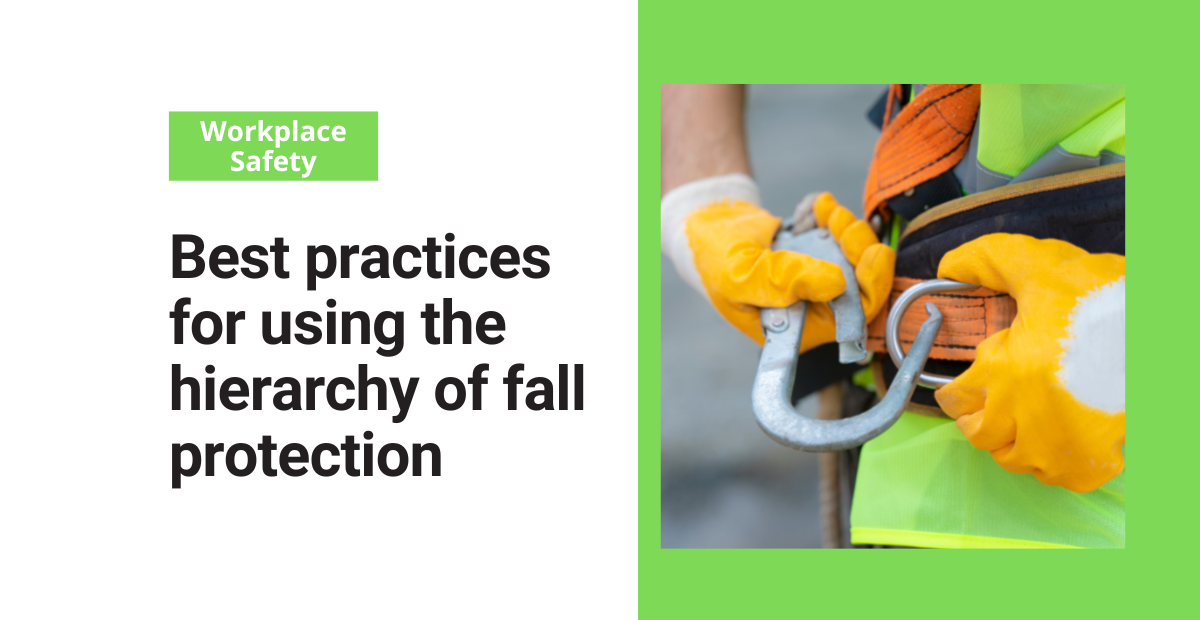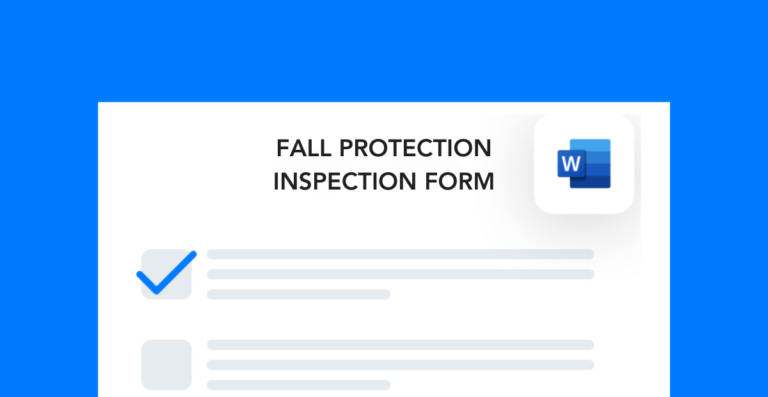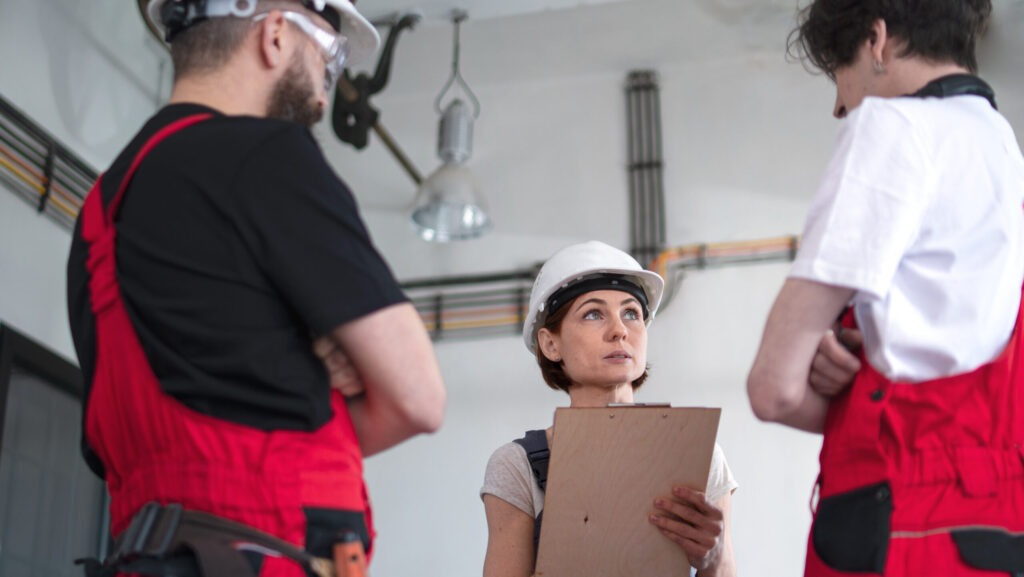In general industry, workers who perform tasks 4 feet or more above ground level must use some form of fall protection. Moreover, the hierarchy of fall protection offers a simple system that guides workers in choosing the right protection for each job site or task. Similar to the hierarchy of controls, it’s a useful tool to help determine the measures of both fall prevention and fall protection. But we must say, it is just one part of a comprehensive fall protection plan.
Always choose the method that provides the highest level of safety first. Use less effective methods only when no safer option exists.
Hazard elimination
Hazard elimination provides the safest and most recommended method in the hierarchy of fall protection. It removes the fall risk by keeping workers at ground level.
For example, workers use extension poles to reach high surfaces instead of climbing ladders. In addition, hazard elimination helps you choose the right equipment to invest in so you can keep your workers safe.
Passive fall protection
Passive fall protection keeps workers safe without requiring extra steps to prevent a fall. Moreover, it creates a physical barrier between the worker and the fall hazard. Furthermore, this barrier plays an important role in the hierarchy of fall protection.
Cover any floor openings or holes deeper than 6 feet with material that can support twice the weight of any worker, equipment, or vehicle that may pass over it. In addition, mark the cover with words such as “hole” or “cover” to improve visibility.
Passive fall protection can also be achieved through guard rails. Guard rails are made up of top rail, mid rail, toe board, and anchoring posts. The rail must be strong enough to withstand up to 200 lbs. of force in outward or downward positions.
Another method of passive fall protection is safety nets. The holes in the net should not exceed 6 inches and the condition of the net should be inspected weekly.
For example, workers set up guard rails when working around trenches as a form of passive fall protection. As a result, the guard rails ensure that no one falls in.
Fall restraint systems
Fall restraint systems are when PPE is used to restrict the worker’s range of movement to prevent falls. The hierarchy of fall protection considers these systems. The system cannot be used without proper training. It is different from fall arrest systems in the fact that it tethers the worker from falling any distance. The PPE used in fall restraint systems can include body belts, harnesses, anchorage, and connectors. The system must be able to withstand up to 5000 lbs. of force.
Although OSHA does not mention “fall restraint systems” in its fall protection rules, it does allow their use in place of fall arrest systems when applied correctly. In addition, workers can combine a restraint system with passive fall protection to maximize safety. As a result, fall restraint systems hold an important role in the hierarchy of fall protection.
For example, workers use a fall restraint system by attaching themselves to an overhead anchor point while roofing. In addition, they position the anchor point close or directly above to reduce the impact force in case of a swing. However, when no overhead anchor point exists, workers invest in a fall arrest system instead.
Fall arrest systems in hierarchy of fall protection
Fall arrest systems not only require training but they also require you to have a rescue plan. Within the hierarchy of fall protection, arrest systems enable the most amount of movement. They protect workers from sudden impact and the risk of freefall.
The PPE includes a full-body harness, lanyard, snap hooks, ropes, straps, and anchorage points. Workers can use body belts for positioning, but they cannot rely on them for fall protection. In addition, the worker using a fall arrest system must understand how to use the product, complete training, and follow a rescue plan. They must also inspect and maintain the equipment.
For example, workers may use a fall arrest system while climbing steep, hazardous stairways on above-ground tanks. As a result, the system plays a crucial role in the hierarchy of safety measures.
Administrative controls
Administrative controls serve as the last resort for protecting workers. Therefore, safety professionals do not recommend relying on them. These methods focus on creating awareness about hazards but do not directly stop workers from falling. As a result, administrative controls rank lowest within the hierarchy of fall protection. Using warning signs and training employees are some methods of implementing administrative controls.





